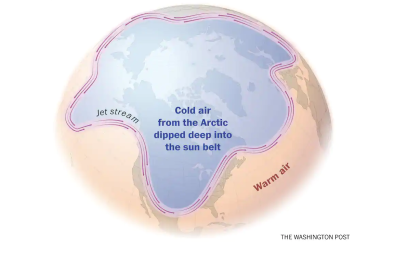Persistent shift of the Arctic polar vortex towards the Eurasian continent in recent decades
Study key findings & significance
- The Arctic polar vortex shifted persistently towards the Eurasian continent and away from North America in February over the past three decades.
- This shift is found to be closely related to circulation change in response to Arctic sea-ice loss, particularly over the Barents–Kara seas.
Abstract
The wintertime Arctic stratospheric polar vortex has weakened over the past three decades, and consequently cold surface air from high latitudes is now more likely to move into the middle latitudes. However, it is not known if the location of the polar vortex has also experienced a persistent change in response to Arctic climate change and whether any changes in the vortex position have implications for the climate system. Here, through the analysis of various data sets and model simulations, we show that the Arctic polar vortex shifted persistently towards the Eurasian continent and away from North America in February over the past three decades. This shift is found to be closely related to the enhanced zonal wavenumber-1 waves in response to Arctic sea-ice loss, particularly over the Barents–Kara seas (BKS). Increased snowcover over the Eurasian continent may also have contributed to the shift. Our analysis reveals that the vortex shift induces cooling over some parts of the Eurasian continent and North America which partly offsets the tropospheric climate warming there in the past three decades. The potential vortex shift in response to persistent sea-ice loss in the future, and its associated climatic impact, deserve attention to better constrain future climate changes.
Related Content






